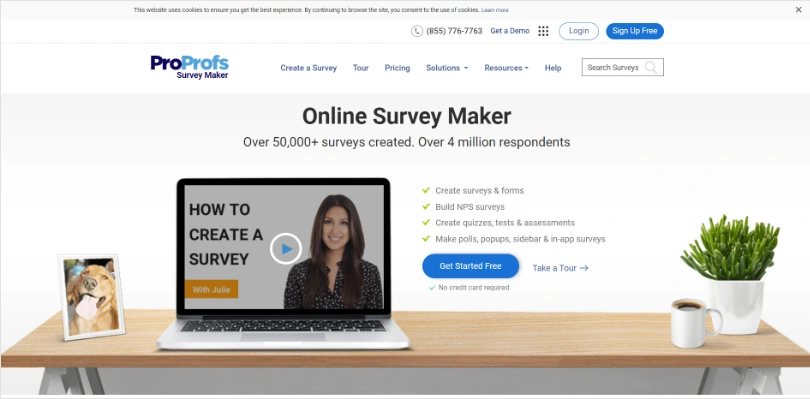If you’re trying to improve your website’s user experience, boost conversions, and make smarter product decisions, there’s one underrated asset you can’t afford to ignore: the website feedback form.
When done right, a website feedback form is like a direct line to your users’ minds. It reveals what’s working, what’s broken, and what’s missing—from clunky navigation to confusing pricing, unclear copy, or a great experience worth doubling down on.
But here’s the catch—not all feedback forms work.
A growing number of users on forums and review platforms say they’re willing to share feedback—but only if the form is quick, contextual, and frictionless. Long, intrusive, or irrelevant forms? They get ignored. Worse, they frustrate users and increase bounce rates.
So, how do you design a website feedback form that people actually want to fill out?
In this guide, we’ll show you how to build better feedback forms from the ground up.
Let’s get into it.
What Is a Website Feedback Form?
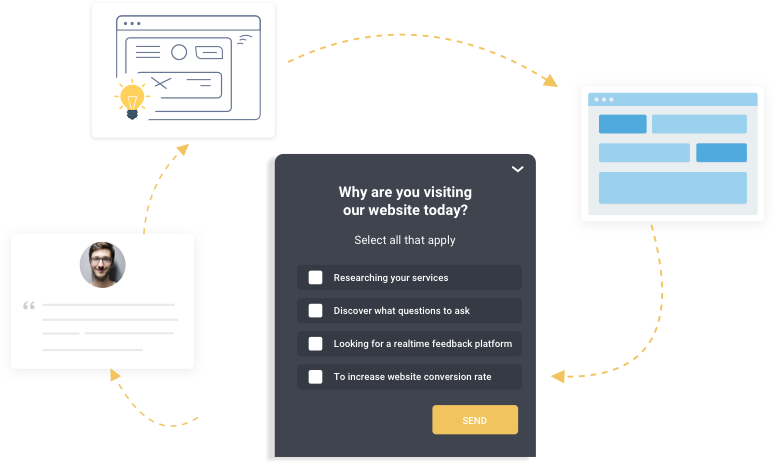
A website feedback form is an embedded or triggered survey on your website that lets users share their opinions, report problems, or suggest improvements. Think of it as your always-on user listening tool—quietly collecting insights while users browse, click, purchase, or exit.
These forms can appear as pop-ups, floating buttons, slide-ins, or embedded widgets. Depending on your goal, they might ask:
- “Did you find what you were looking for?”
- “What almost stopped you from checking out today?”
- “How likely are you to recommend this page?”
When thoughtfully designed, feedback forms help you:
- Understand user behavior and drop-offs
- Validate new features or designs
- Fix bugs or broken experiences faster
- Prioritize updates that actually matter to users
Pro Tip: Great feedback forms ask the right questions at the right time—without interrupting the experience.
3 Types of Website Feedback Forms to Collect User Feedback
Collecting feedback from website visitors and customers is crucial for improving your user experience, conversion rate, and customer satisfaction.
But, achieving this goal effectively and efficiently requires the use of appropriate feedback forms. Here are 3 common types of website feedback forms you can use:
1. On-Site Popup Surveys
You can place popup Nudges™ on any website or mobile app. These nudges appear as a popup non-intrusively without disrupting users’ experience. You can configure these popups to appear at a certain time or when the users meet certain conditions.
For example, when they are about to leave or when they stay for a while. You can ask them any question you want, with choices or with their own words. You can use this feedback to see how well your website is doing, how easy it is to use, and how happy your visitors are.
Pro Tip: Keep it short, mobile-optimized, and well-timed—poor placement or overly long forms lead to high abandonment.
2. Feedback Button Form
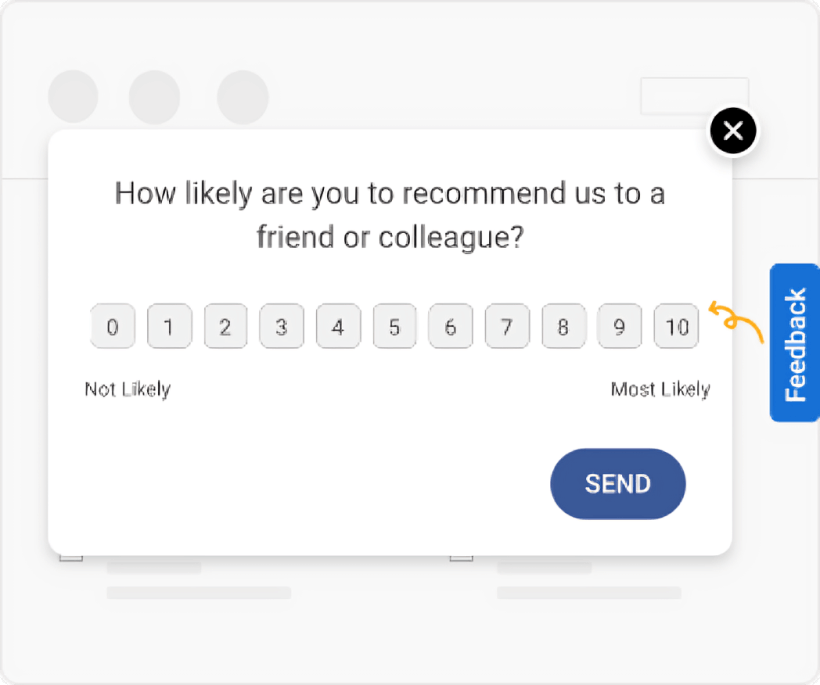
This type of website feedback form is a survey that’s placed in the form of a button or a widget on your website. It allows you to ask short and simple questions like “Did you find what you were looking for?” or “How likely are you to recommend us to a friend?”.
You can use a feedback button survey to collect unsolicited feedback from your visitors without interrupting their browsing experience.
If you want to create effective feedback button surveys that stand out, are easy to customize, and get results, try an online survey tool like Qualaroo. Users can use its feedback button surveys to measure your website’s key metrics, such as CSAT, NPS, and CES.
Pro Tip: Make sure the button is noticeable but not intrusive. Consider placing it in the bottom right corner where it’s visible on both desktop and mobile.
3. Link NudgeTM
A Link NudgeTM is a feedback form you can share as a link in an email, on a social media post, etc. It allows you to ask targeted and relevant questions, such as “How satisfied are you with our service?” or “How likely are you to recommend us to others?”
You can use the Link NudgeTM to engage your customers and get feedback on specific aspects of your business. You can further utilize this to improve customer service, marketing, and product development.
Not just this, but you can also use Link NudgeTM to collect feedback from your employees on their work environment, engagement, and satisfaction, as well as during employee exit interviews. This can help you improve your internal communication, culture, and overall productivity.
Pro Tip: Since response rates tend to be lower via shared links, keep the survey short and make the value clear in your invitation message.
As you can see, there are many types of website feedback forms you can use to collect feedback from your website visitors or users.
Each type has its own pros and cons, depending on your goals, audience, and context. The key is to choose the type that best suits your needs and optimize it for maximum engagement and effectiveness.
But how do you create a feedback form that looks good and works well? That’s what we’re covering next.
9 Most Popular Website Feedback Form Templates
We’ve put together some awesome customer feedback templates that’ll get you the insights you need to take your website to the next level.
These templates work best when paired with smart triggers, conditional logic, and user segmentation to show the right question to the right visitor at the right moment.
1. Net Promoter Score (NPS)
The Net Promoter Score form is designed to help you measure customer loyalty and advocacy. It enables you to identify promoters, detractors, and passives and take appropriate action to improve your website’s user experience.
Utilizing this template can build a more loyal customer base.
Survey Questions:
The Net Promoter Score template includes questions like:
- On a scale of 0-10, how likely are you to recommend our website to others?
- What is the primary reason for your score?
- How can we improve our website to make you more likely to recommend us?
When to Deploy: Deploy at the end of a customer journey or at key touchpoints on your website. Ideal for visitors who’ve made a purchase or used your service multiple times.
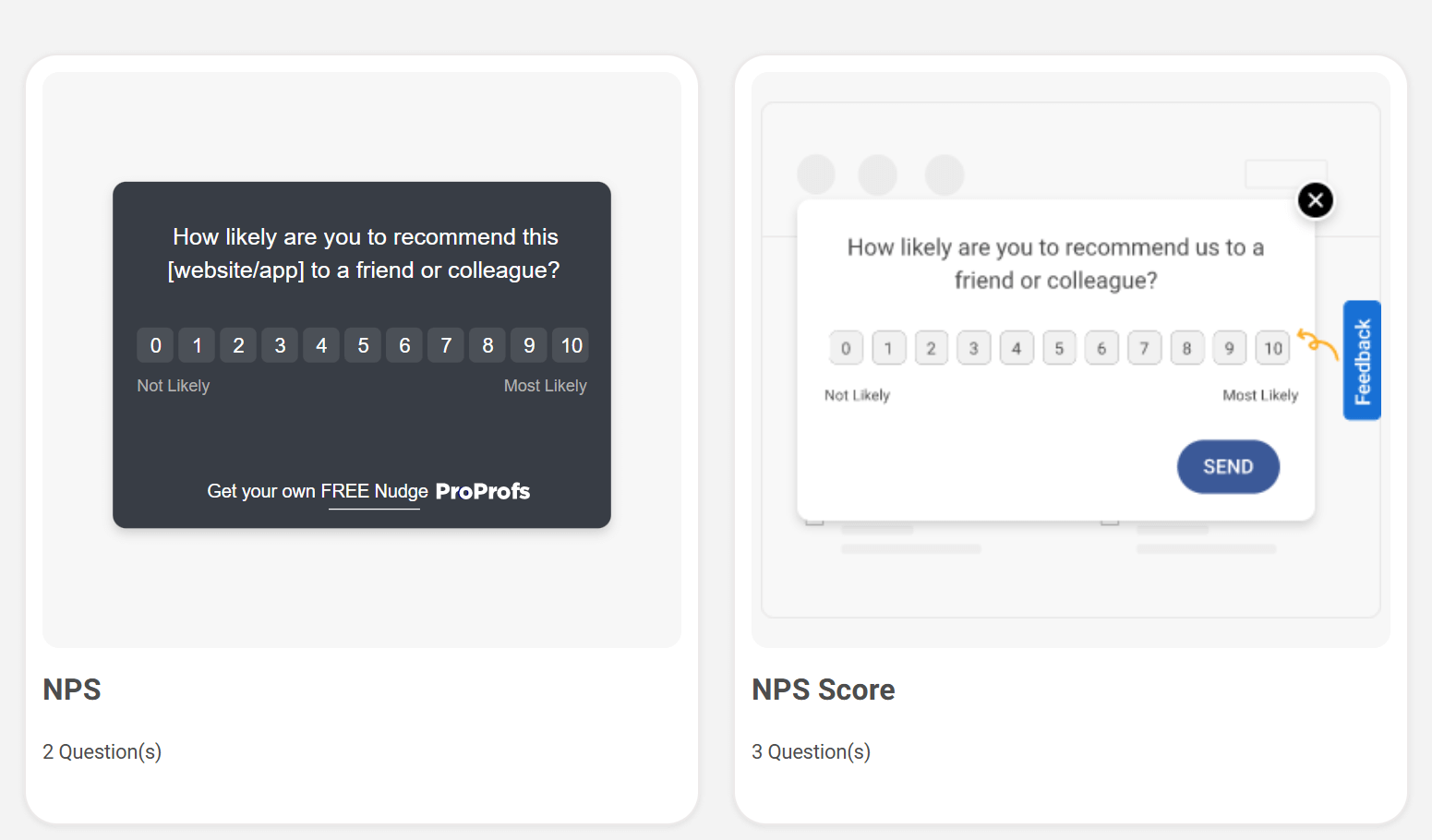
2. Conversion Rate Optimization
The Conversion Rate Optimization (CRO) survey template enables you to gather feedback on optimizing your website’s conversion rate. It helps you identify user friction points, improve website elements, and boost conversions.
Survey Questions:
- Did you find the product or content you were looking for on our website?
- Was the checkout process simple and straightforward for you?
- Were there any obstacles that prevented you from completing your purchase?
- How can we improve our website experience?
When to Deploy: Before launching a new feature, campaign, or design update—or after a failed conversion attempt.
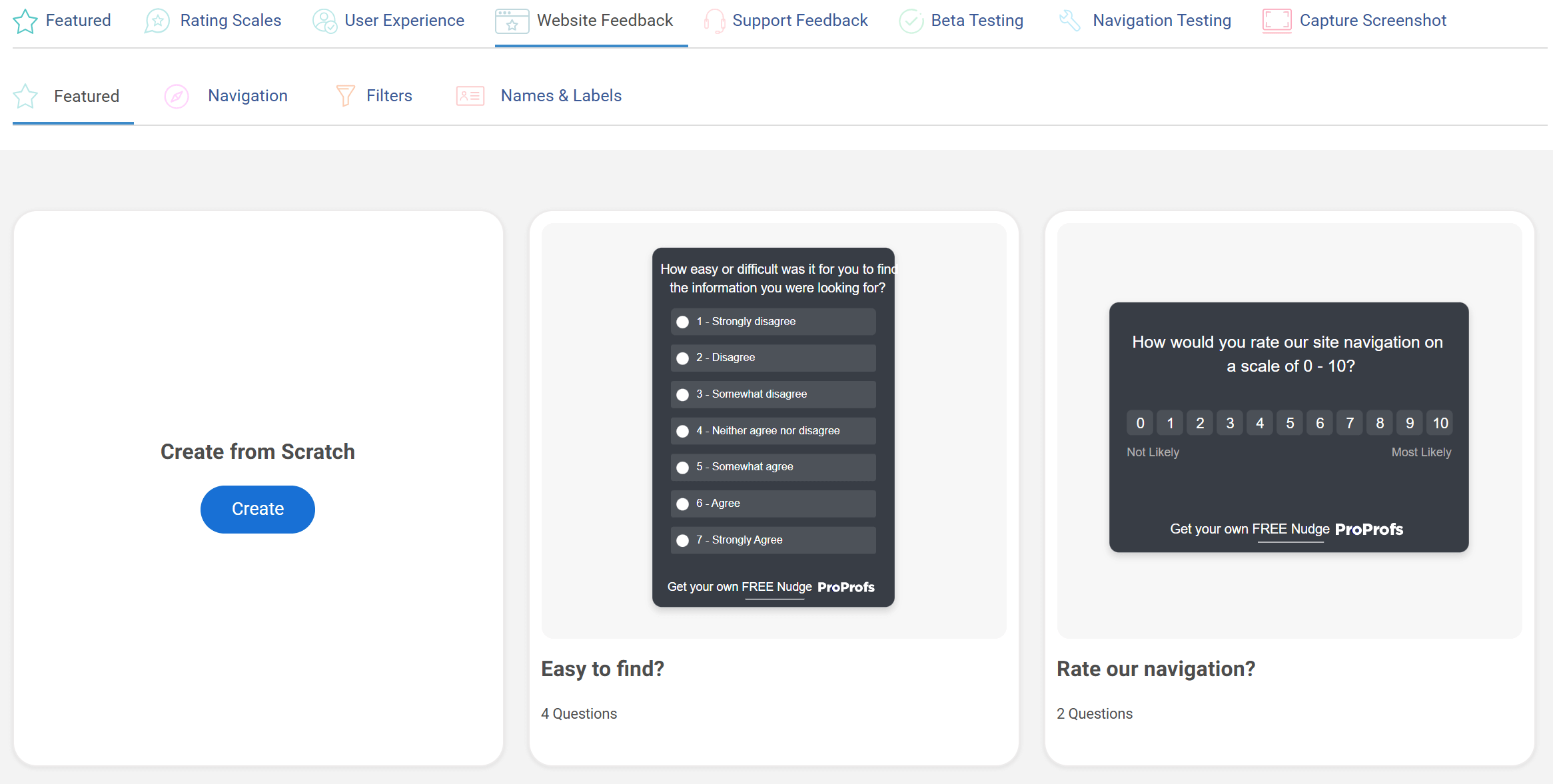
3. Product Feedback
The Product Feedback template allows you to collect feedback on your website’s products, features, and services. It helps you identify areas for improvement, prioritize updates, and provide a better customer experience.
Survey Questions:
- How would you rate the usability of our product/service?
- What feature would you like to see in our product/service?
- How satisfied are you with our product/service?
- Was the onboarding process for our product/service easy to follow?
When to Deploy: During beta testing, after a new launch, or when trying to prioritize feature updates based on real customer input.
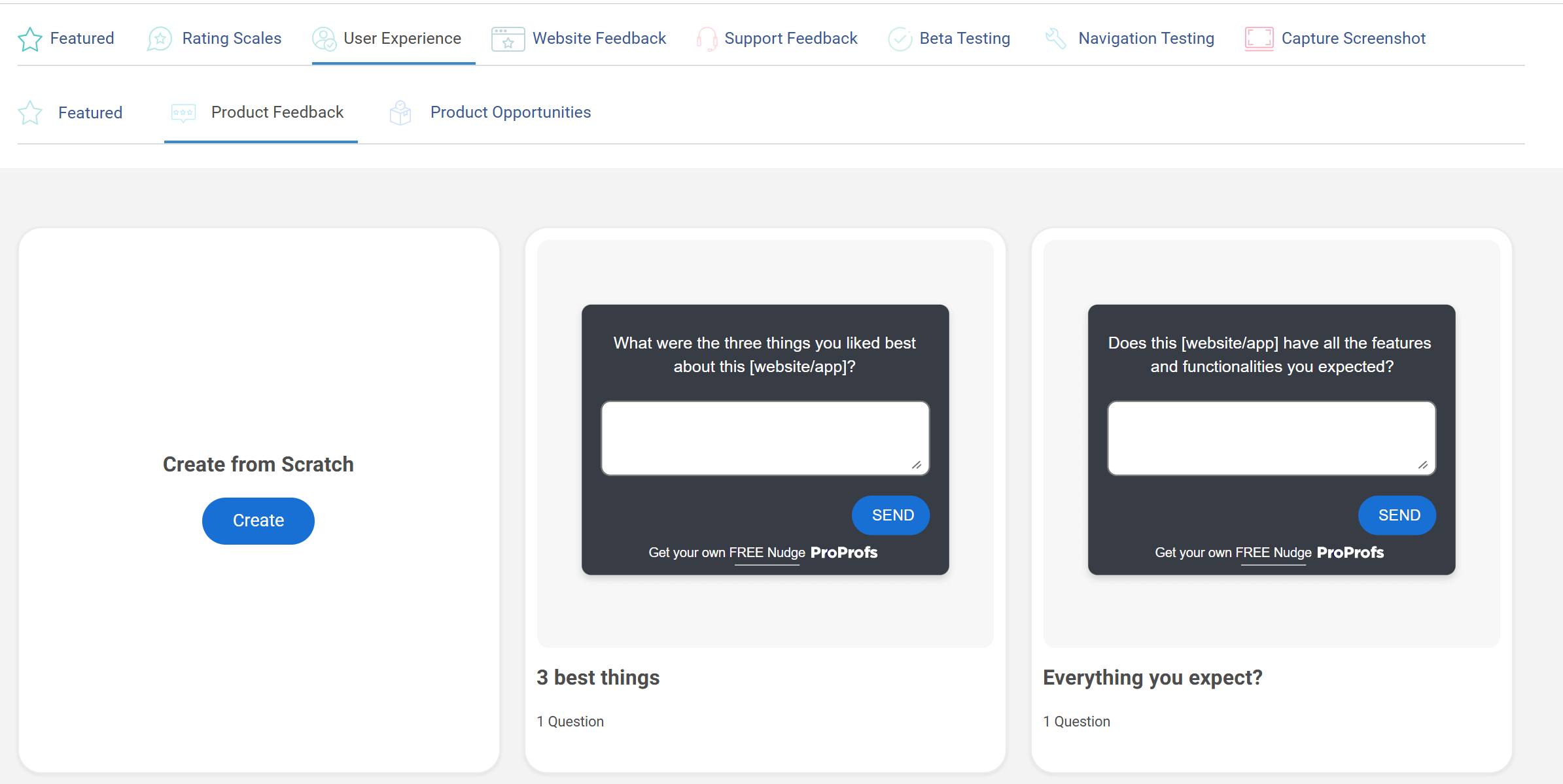
4. Pricing Feedback
The Pricing Feedback template enables you to gather insights about your product or service’s price perception. It helps identify whether your offering feels too expensive, too cheap, or just right.
Survey Questions:
- How would you rate our product/service’s pricing?
- Is our product/service worth the price we are asking for?
- How much would you be willing to pay for our product/service?
- Would you consider our product/service over other competitors based on pricing?
When to Deploy: After introducing a new pricing plan, running a special deal, or when users abandon their cart on pricing pages.
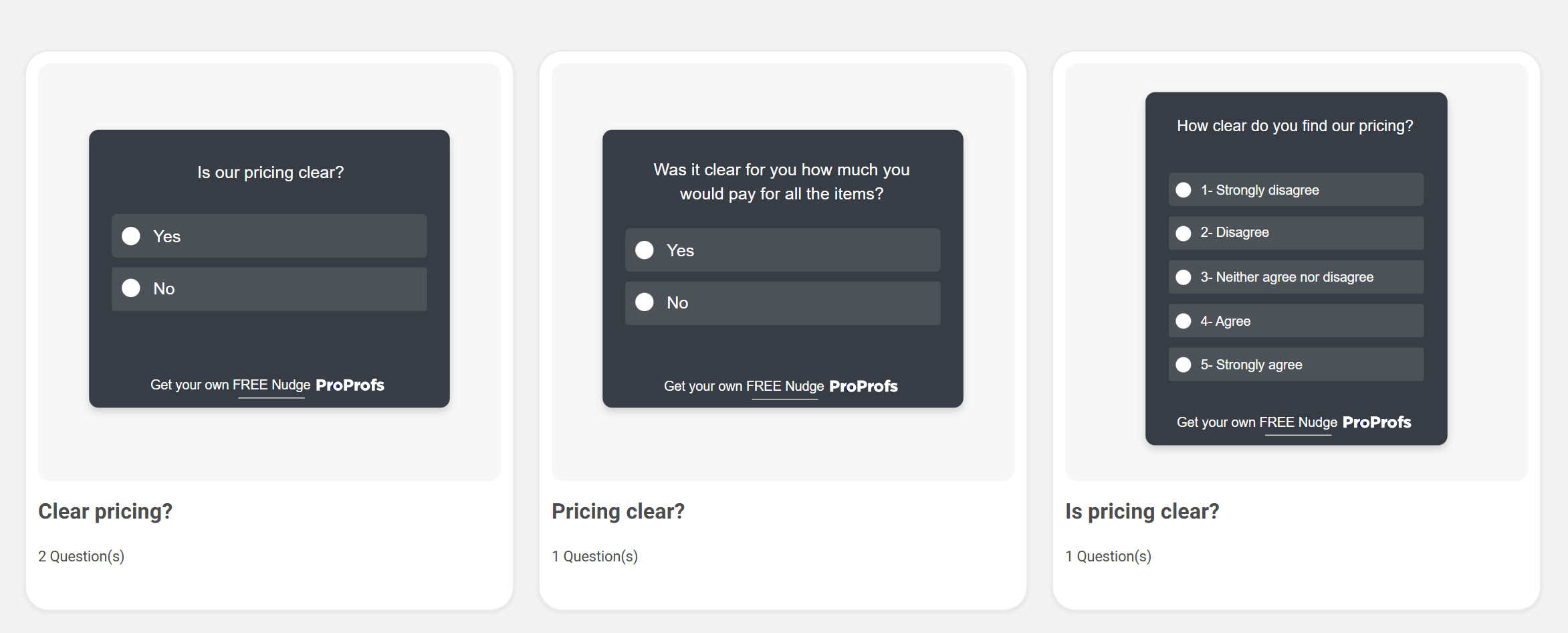
5. Exit Intent Survey
Exit-intent surveys help you collect feedback from users about to leave your website. They help uncover why users aren’t converting and what might bring them back.
Survey Questions:
- What was the primary reason for you leaving our website today?
- Did you find what you were looking for on our website?
- Could we have done anything differently to provide a better experience?
- Would you consider returning to our website in the future?
When to Deploy: When a visitor’s cursor signals they’re about to close the tab or leave the page without completing a key action.
6. Website Redesign Feedback
This template helps you gather feedback on how your visitors perceive your website’s new design. It lets you validate changes, uncover new issues, and improve usability.
- How would you rate the new design of our website?
- Have you noticed any changes in the website’s functionality?
- Was it easy to navigate with the new design?
- What suggestions do you have for further improvements?
When to Deploy: Right after a redesign goes live or when comparing two versions during A/B testing.
7. Website Navigation Feedback
This template focuses on usability, helping you understand whether users can find what they need and navigate the site easily.
8. Content Feedback
This template measures how helpful and engaging your content is. It’s perfect for blogs, product pages, and landing pages.
Survey Questions:
- How valuable do you find the content on our website?
- Is there any specific content you find helpful or well-written?
- Is there any content you would like to see more of?
- Any suggestions for improving the quality or relevance?
When to Deploy: After publishing new content, updating blog posts, or launching a new resource center.

“Just like with a product, you can’t just build your content strategy alone in a dark room and expect it to be successful. You need to learn what your customers want, gain a deep understanding of the problems they’re trying to solve, and work backward from that.”
— Hiten Shah, Product and Growth, Dropbox
9. Customer Support Feedback
This template helps you get feedback on the quality of customer support by asking users about their satisfaction level, expectations level, and suggestions level of customer support. It’s a useful way to measure customer service performance, identify areas for improvement, and enhance customer loyalty.
Survey Questions:
- How satisfied are you with the support you received?
- Did our team resolve your issue to your satisfaction?
- How likely are you to recommend our support services?
- Anything else you’d like to share about your experience?
When to Deploy: Immediately after a live chat, support ticket resolution, or helpdesk interaction.
Remember: Feedback form performance doesn’t just depend on questions—it depends on when, where, and how they’re asked. Always align deployment with user context.
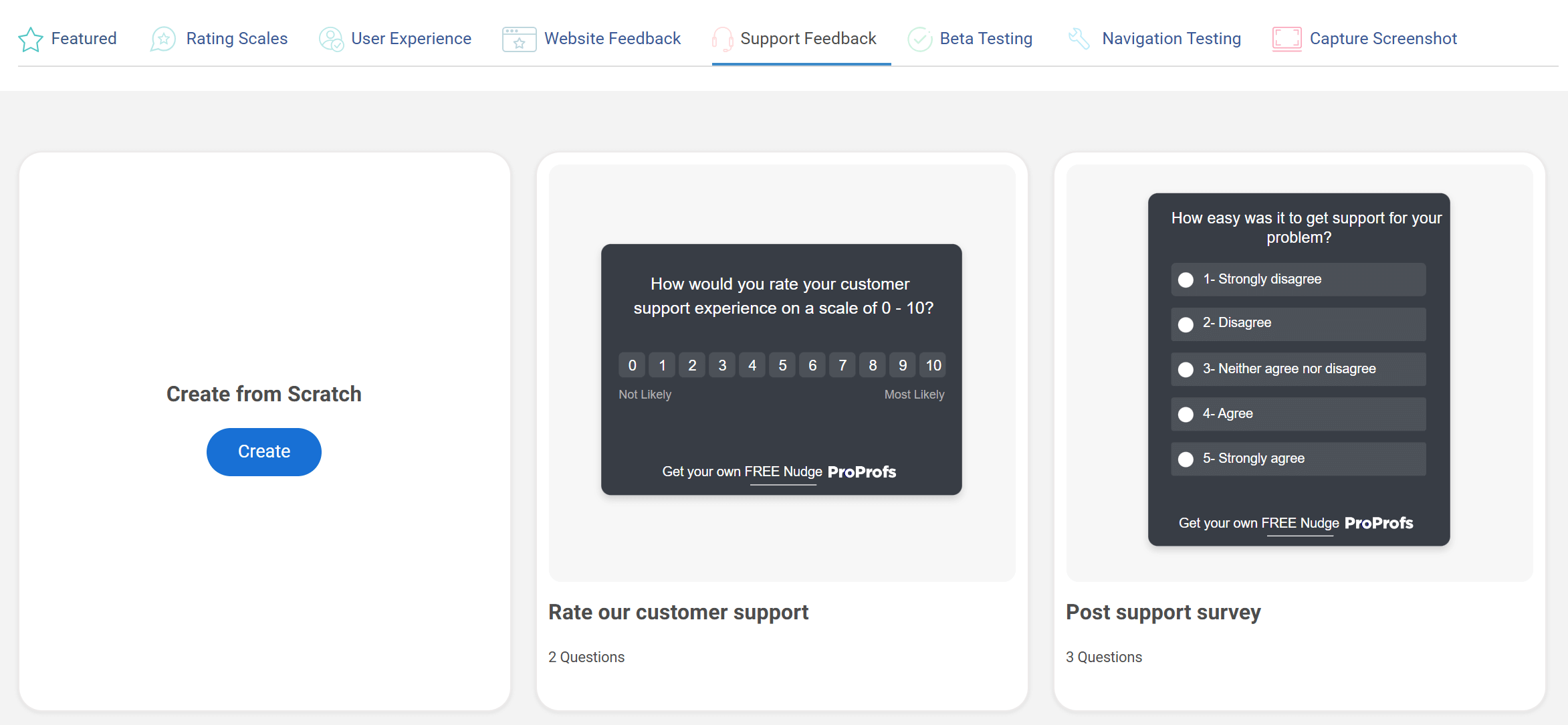
View All Support Feedback Templates
How to Create a Website Feedback Form in 5 Simple Steps
Setting up a feedback form doesn’t require custom coding or long implementation cycles. Most modern survey platforms offer simple, visual builders and direct integrations for fast setup.
Here’s how to go from idea to live form in five focused steps:
Step 1: Choose a Survey Tool With Website Deployment Capabilities
Pick a feedback platform that lets you:
- Embed forms directly on web pages or deploy via script/tag manager
- Trigger surveys based on behavior (exit intent, scroll depth, etc.)
- Customize targeting by URL, device type, or session context
Optional integrations with analytics, CRMs, or email platforms are a bonus but not essential for your first form.
Step 2: Select a Deployment Method
Decide how you want the form to appear:
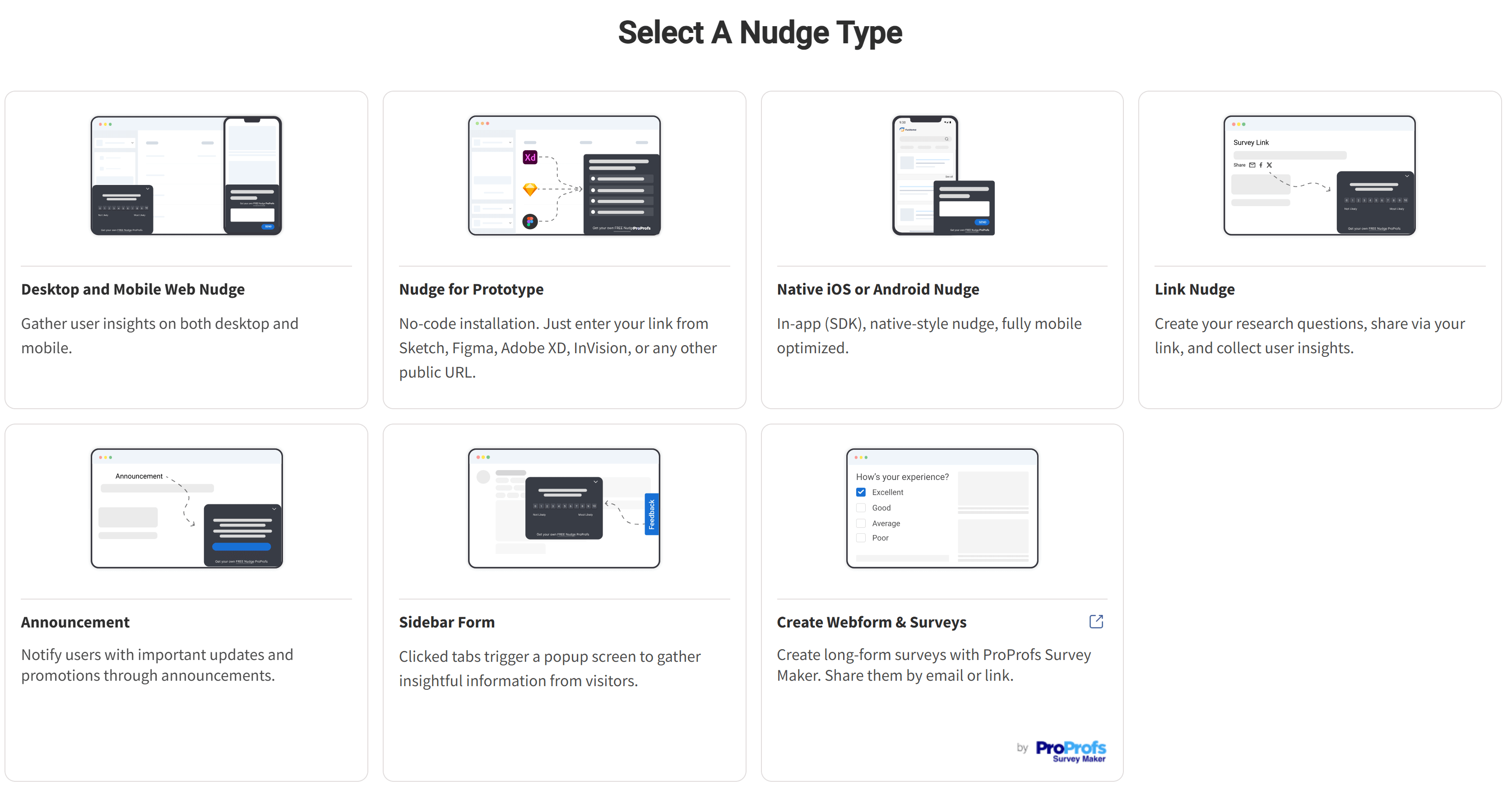
- Sidebar Form: permanently visible (e.g., feedback button)
- In-App: appears on your app, non-intrusive
- Regular Survey: non-intrusive, triggered after time on page
Most platforms offer pre-built options with customizable behavior and placements.
Step 3: Create Your Feedback Form
Now it’s time to build the form itself.
Most platforms offer drag-and-drop builders where you can:
- Add questions (rating scales, multiple choice, text, etc.)
- Rearrange their order and assign logic rules (e.g., “If No, then show Q3”)
- Customize text, button labels, and thank-you messages
- Save your form as a reusable template if you’ll use it again
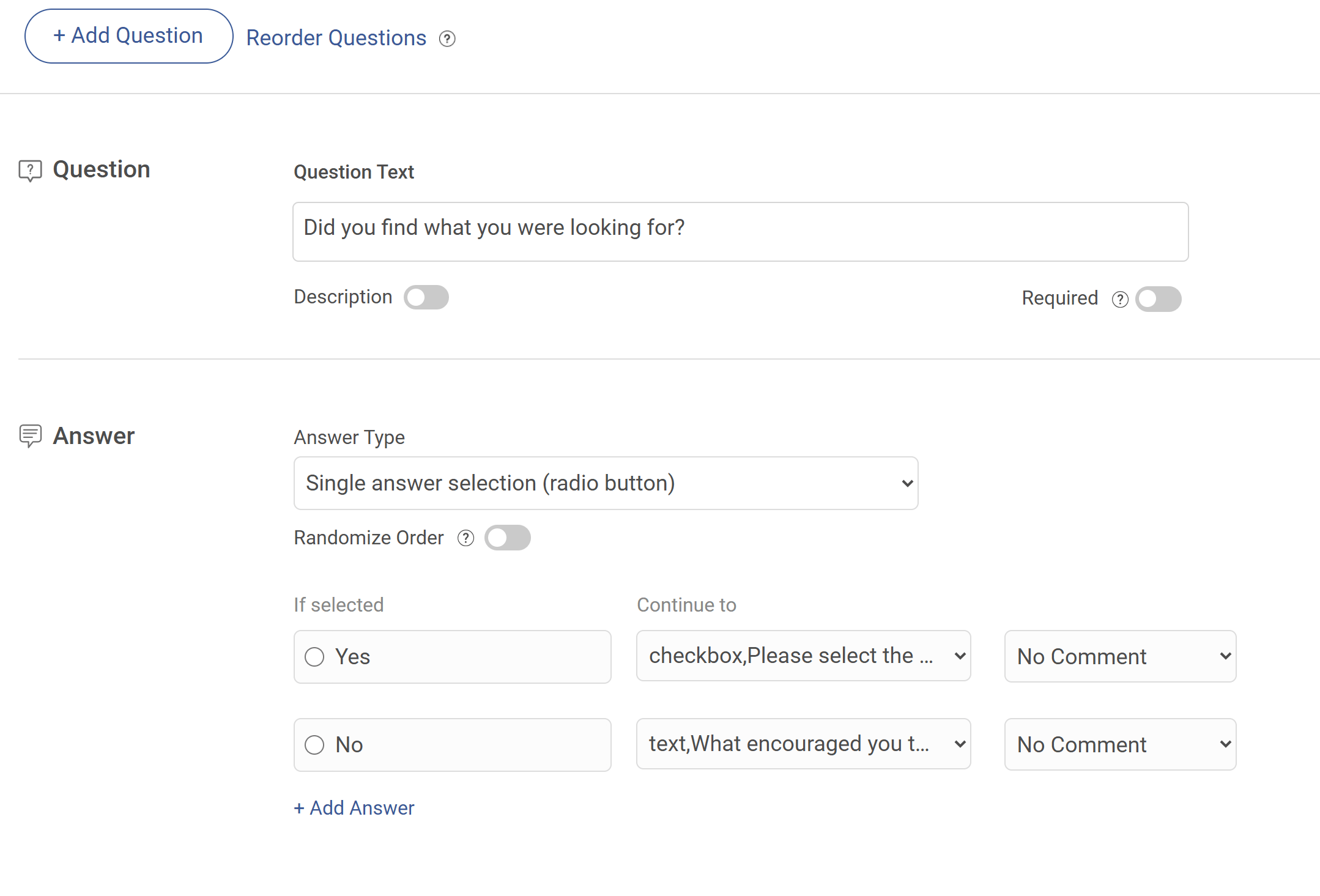
Keep the form concise. Three to five questions is often more than enough to get useful insights without fatiguing users.
Step 4: Configure the Triggering Rules
Set when and where the form should display:
- By page URL (e.g., only on /checkout or /pricing)
- By user behavior (e.g., 30 seconds on page, 75% scroll, exit intent)
- By session or user attributes (e.g., repeat visitor, traffic source)
You can typically set this using dropdowns or visual conditions—no development help needed.
Step 5: Launch Your Survey
Once you’re ready, install the form on your website using:
- A JavaScript embed code (copy-paste into site footer or tag manager)
- CMS-specific integrations (e.g., WordPress, Shopify, Webflow
- Google Tag Manager for version control and simplified deployment
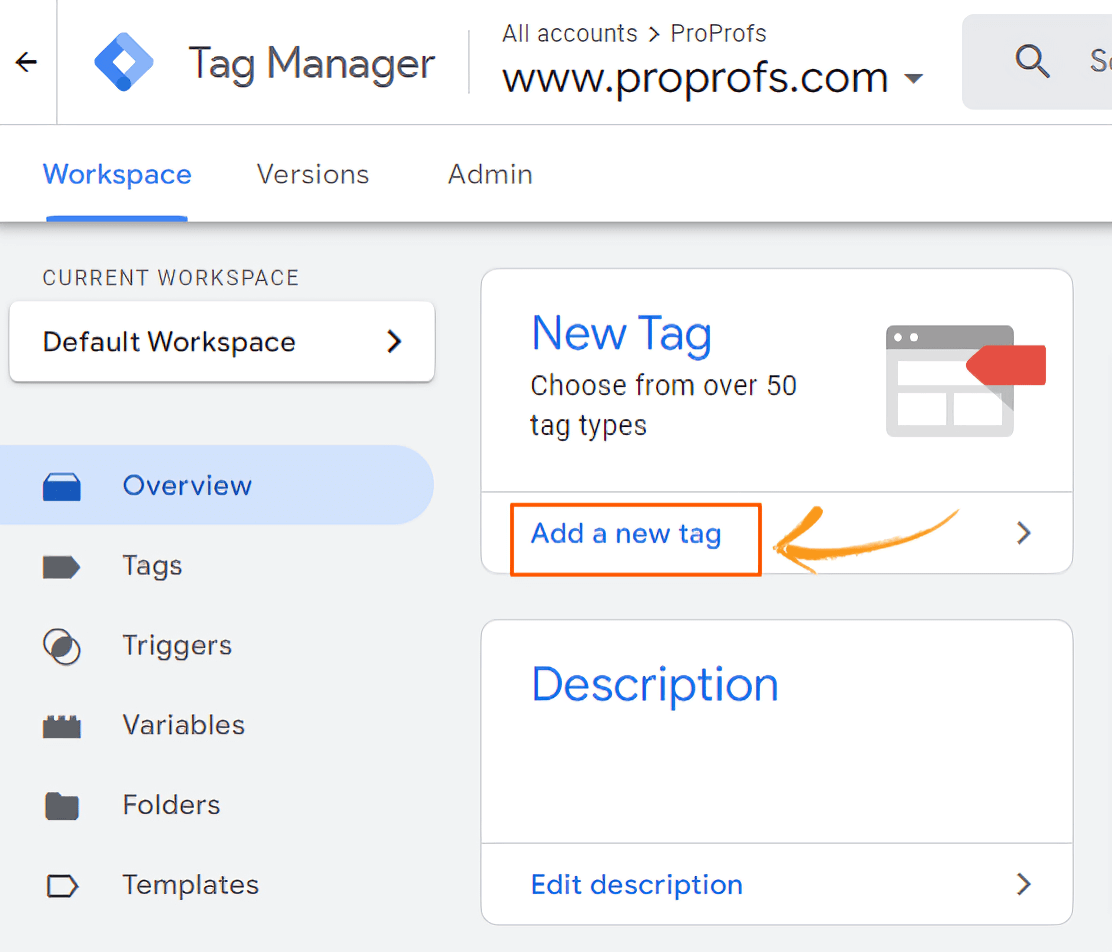
FREE. All Features. FOREVER!
Try our Forever FREE account with all premium features!
Top 8 Tips for Creating Successful Website Feedback Forms
If you’re looking to gather feedback from your website visitors, having a feedback form can be a great way. However, using these forms effectively is important to maximize their impact.
Here are 8 tips to keep in mind:
1. Clearly Define Your Goals
Define your goals before adding a feedback form for a website. Decide if you want to measure satisfaction, identify usability issues, test new features, or gather feature requests. Clarity is key for an effective form.
What to Do (and How):
Start with a single-sentence goal that reflects the user’s job to be done.
- “I want to know why users don’t complete checkout.”
- “I want to validate whether the new homepage layout is working.”
How:
- Open a doc and list your main user flows (e.g., checkout, search, blog scroll).
- For each flow, map a question to a form. Keep one form per goal to reduce noise.
- Use tags like “goal: usability testing” or “goal: post-purchase NPS” to organize.
2. Align Questions With Goals
Design your feedback form to align with your goals. All website feedback form questions should serve the purpose of obtaining relevant insights. And that’s only possible if you ask relevant questions to the right people.
For this, you can leverage Qualaroo’s conditional logic to allow respondents to skip unsuitable questions and show the survey questions based on their previous responses.
What to Do (and How):
Match each question to a user state or trigger. Example:
- If user didn’t purchase, ask: “What stopped you from completing your order?”
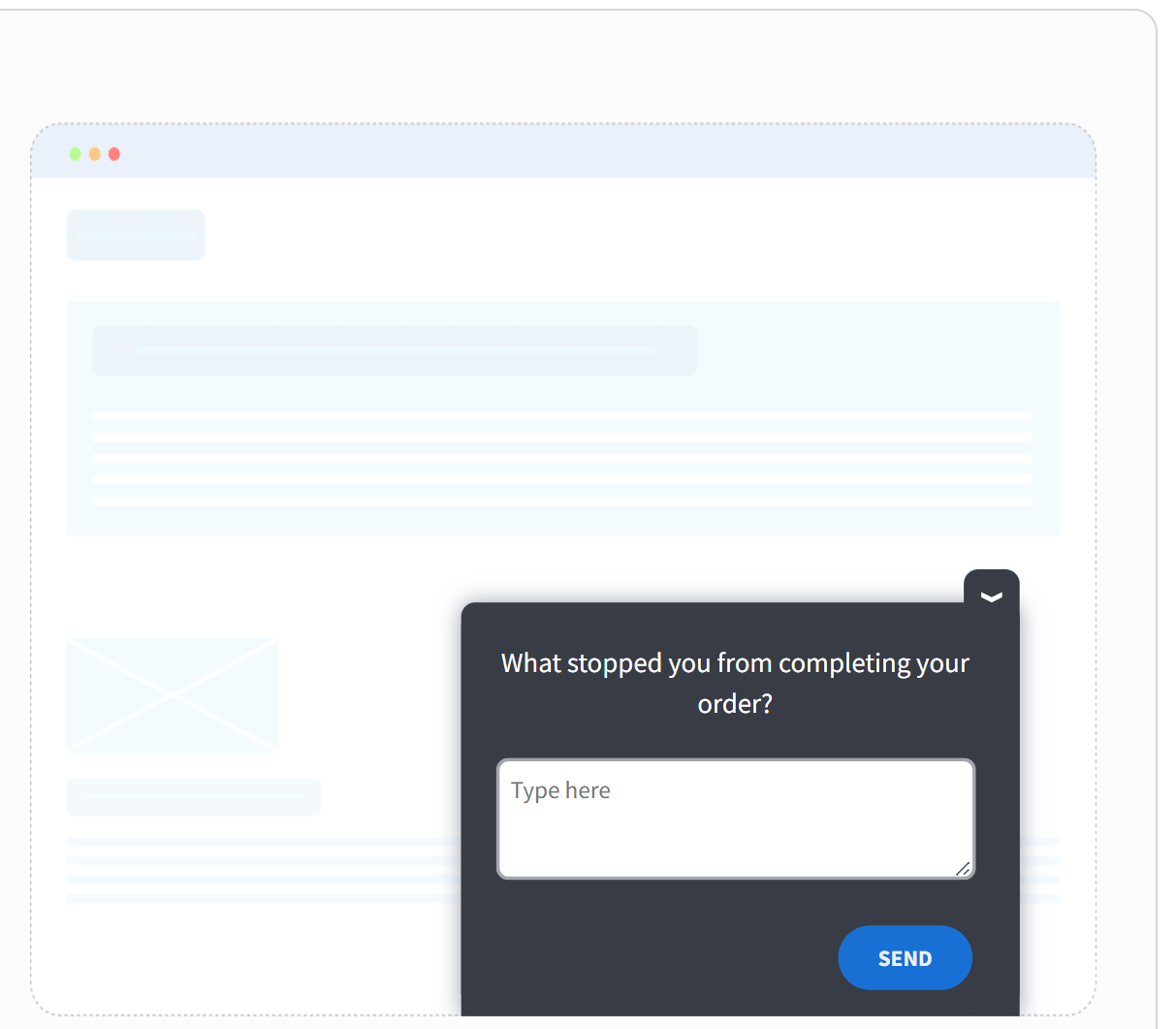
- If user clicked pricing, ask: “Is our pricing clear to you?”
How:
In Qualaroo, go to the “Logic” tab.
Set up “If answer = [X], then show question [Y]” rules.
Add conditions based on page visited, cart abandonment, or scroll depth.
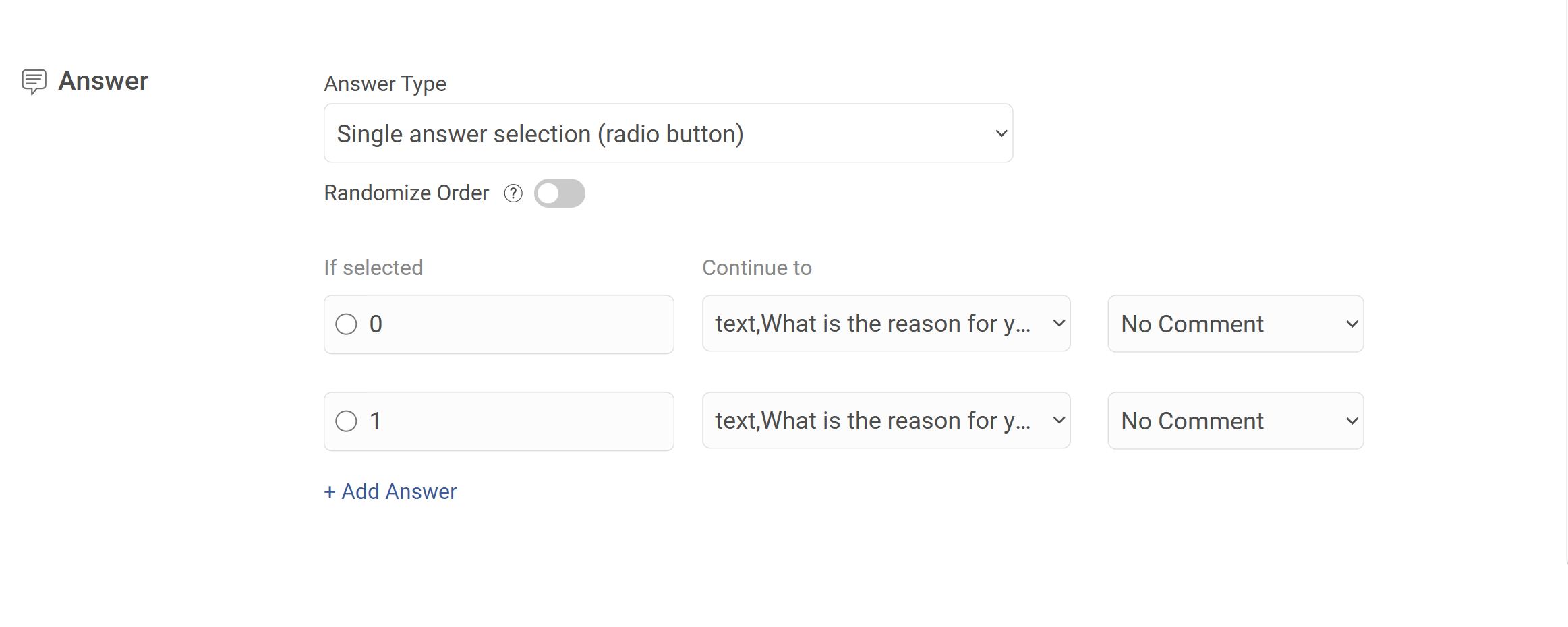
3. Craft Compelling Questions
Use a mix of open-ended and closed-ended questions in your feedback form. Closed-ended questions are easy to analyze and quantify, while open-ended questions can reveal more details and opinions. Make sure your questions are clear, concise, and relevant. Avoid confusing or repetitive wording.
How not to ask:
- How do you rate our website design and usability?
How to ask:
- How do you rate our website design on a scale of 1 to 5? (closed-ended)
- What do you like or dislike about our website usability? (open-ended)
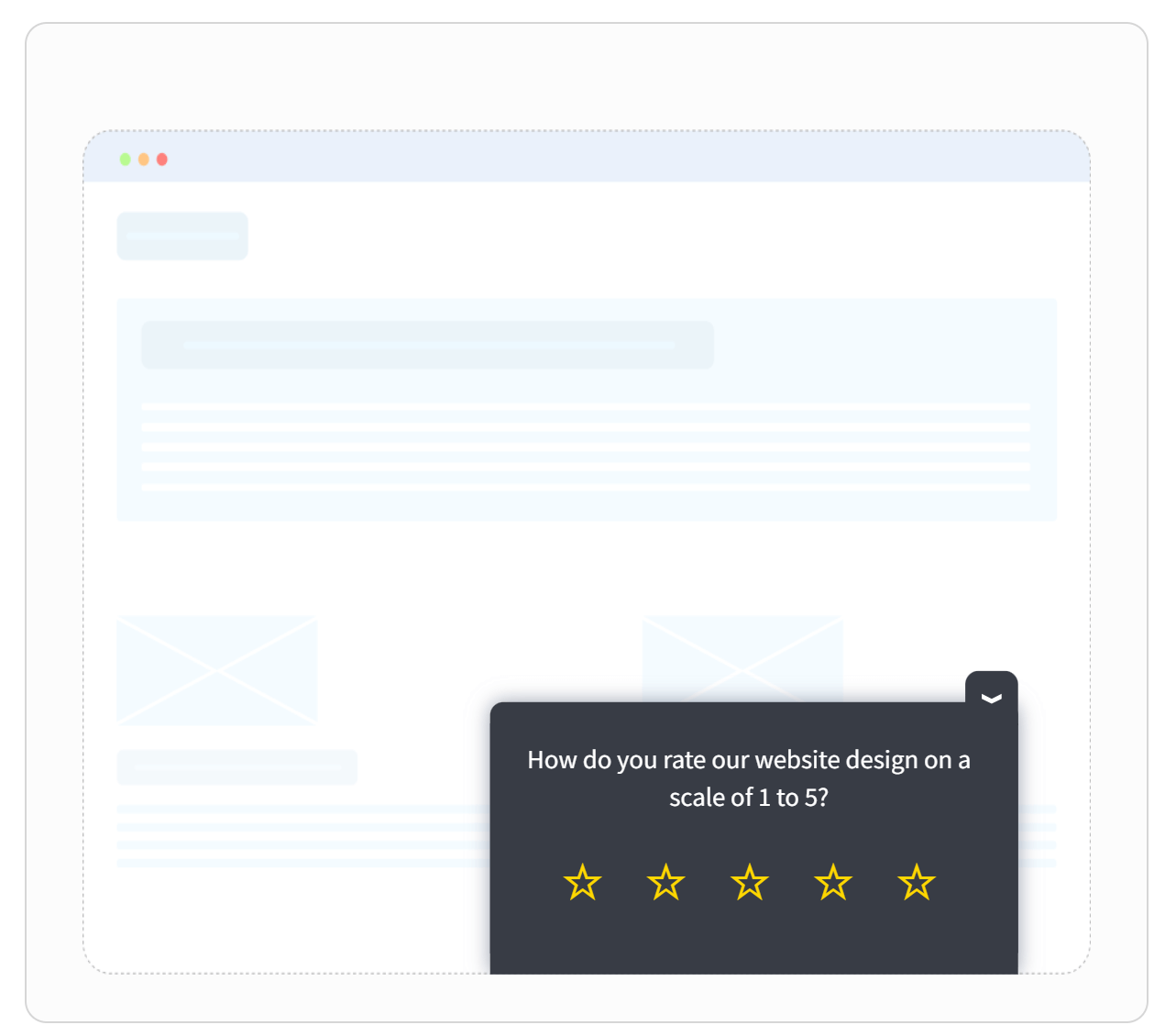
What to Do (and How):
Start with closed-ended to simplify analysis → Follow up with open-ended to capture nuance.
How:
- Use Likert scale or star rating for first Question
- Pipe logic into an open-text follow-up: “Why did you choose that rating?”
In Qualaroo, choose “Likert + Comment” template or build your own in “Create New > Question Type”.
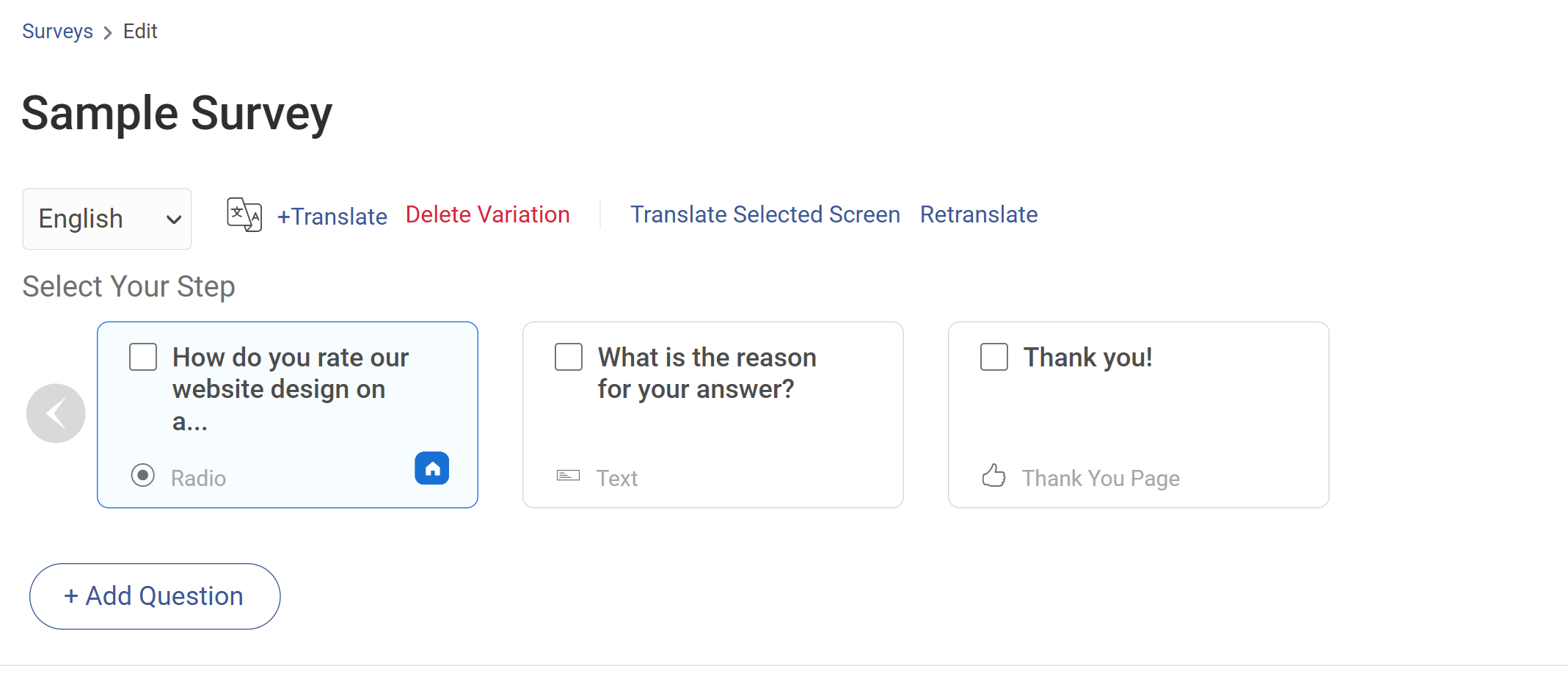
4. Design for User Friendliness
Keep the form short and simple. Use a clean and intuitive design that matches your website’s look. Make it accessible to all users, including those with disabilities, by adding alt text for images and keyboard navigation compatibility.
What to Do (and How):
Optimize every step for clarity and speed.
How:
- Use no more than 3–5 questions per form.
- Use one-question-at-a-time layout for mobile users.
- Include a progress bar (if form exceeds 3 steps)
- Check that buttons are at least 44px x 44px and visible on all device types.
Tools like Typeform and Qualaroo auto-format for mobile. Always preview on both desktop and mobile before launching. Here’s a video on how you can design your surveys:
5. Strategic Timing for Contextual Insights
Place feedback forms strategically to maximize user engagement. Use popup triggers to make them more visible. Qualaroo’s advanced targeting allows you to configure surveys to appear at crucial moments or when users perform certain actions. This allows you to get in-the-moment feedback with context behind it.
What to Do (and How):
Trigger feedback when users are already engaged or showing signs of exit.
How:
- For high drop-off pages, use exit-intent trigger.
- For long content, use 75% scroll-depth or 30-second timer.
- For logged-in users, trigger post-purchase or post-chat.
In Qualaroo:
Go to “Targeting” > When > After a user has been viewing the page for: 30 seconds
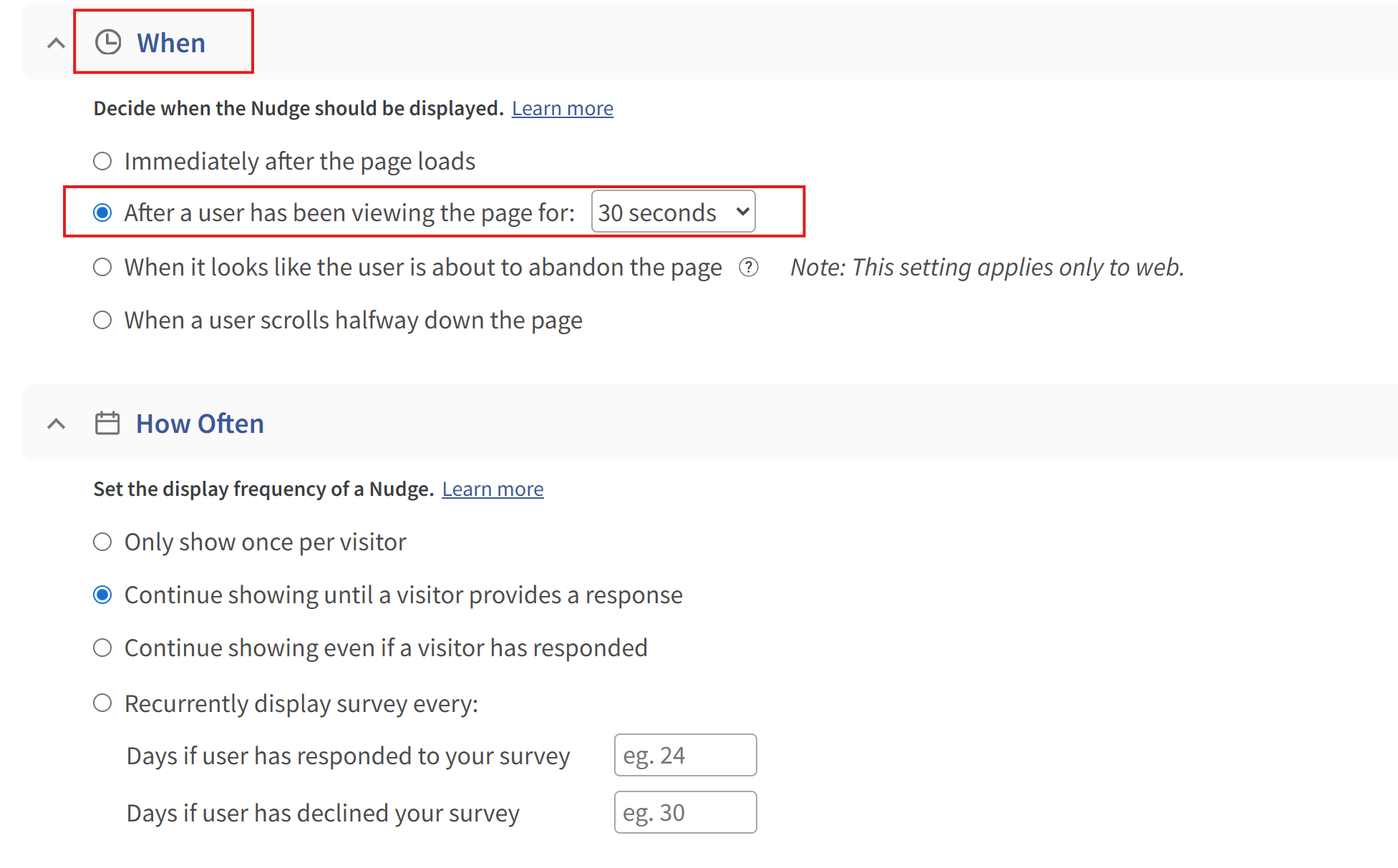
6. Encourage Participation
One way to motivate your users to fill out your feedback forms is to create loyalty programs to incentivize them. For example, you can give them discounts on their next purchase, access to premium features, or free ebooks.
You can also thank them for their feedback and tell them how much you value their opinions. This can help you build trust and long-term relationships with your users.
What to Do (and How):
Use incentives wisely—and always close with appreciation.
How:
- Display a reward message after submission: “Thanks! You’ve unlocked 10% off.”
- Add this logic in your tool’s “Confirmation” or “Thank You” step.
- For loyalty programs, auto-tag responders in your CRM via integrations (e.g., Qualaroo → HubSpot or BIGContacts).
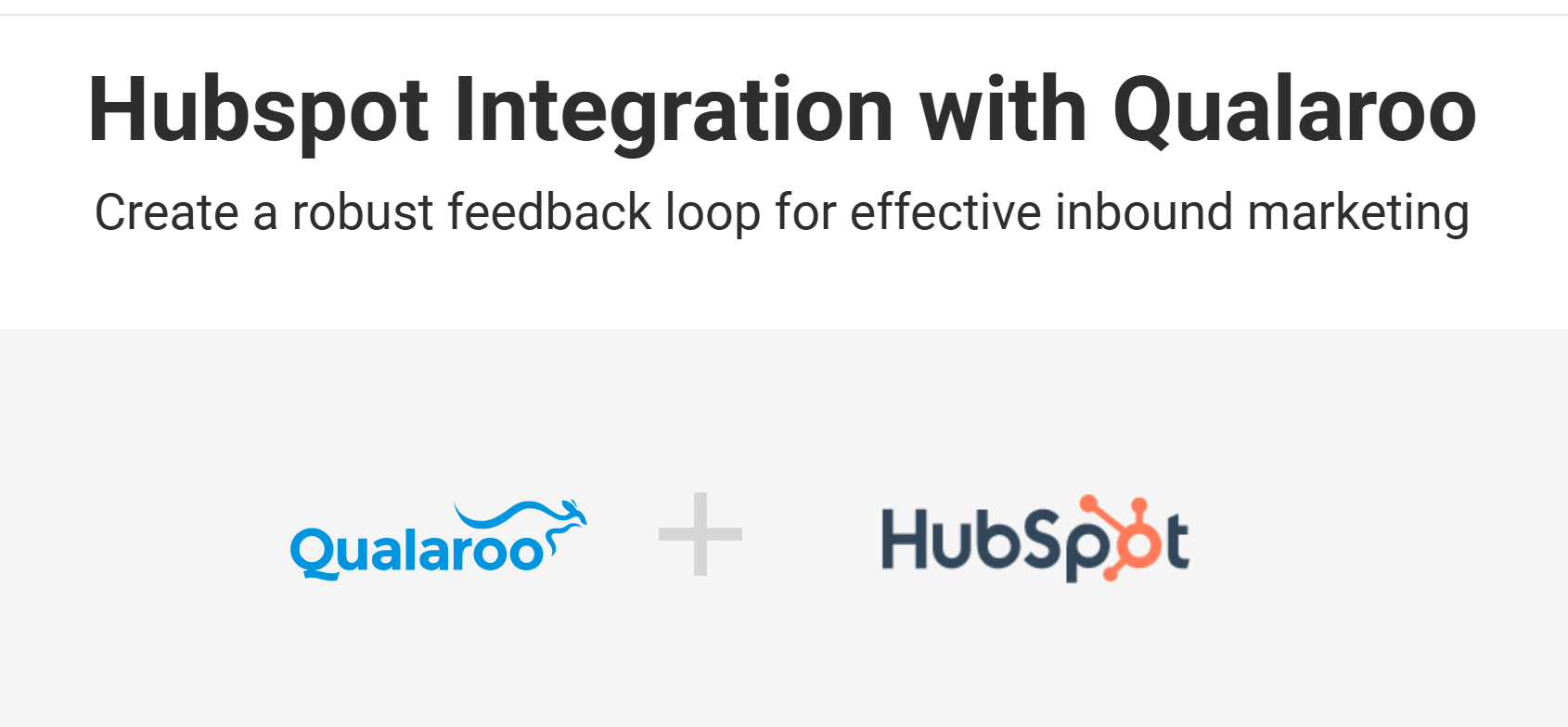
7. Analyze and Take Action
Analyze feedback regularly to identify trends, issues, and pain points. Use the data to inform website improvements. Close the loop by informing users about the implementation of their feedback.
What to Do (and How):
Turn raw responses into patterns and next steps.
How:
- Export feedback weekly to a Google Sheet or dashboard
- Create three columns: Theme | Sentiment | Suggested Action
- Use tags like “checkout friction”, “unclear pricing”, “slow support”
Example:
Theme: Navigation | Sentiment: Negative | Action: Add breadcrumbs on mobile
In Qualaroo, use “Response Labeling” to categorize open-ended feedback.
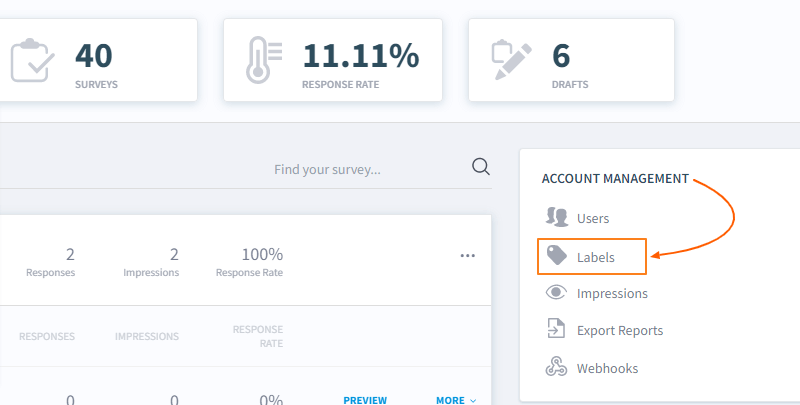
8. Continuous Improvement
Refine feedback forms based on analysis. Iterate on questions, format, and placement. A/B test to identify the most effective approach. Continuously improve website feedback forms.
What to Do (and How):
Track form performance and iterate monthly.
How:
- Create a feedback form performance tracker with metrics:
- Impressions
- Completion rate
- Average time to submit
- Drop-off questions
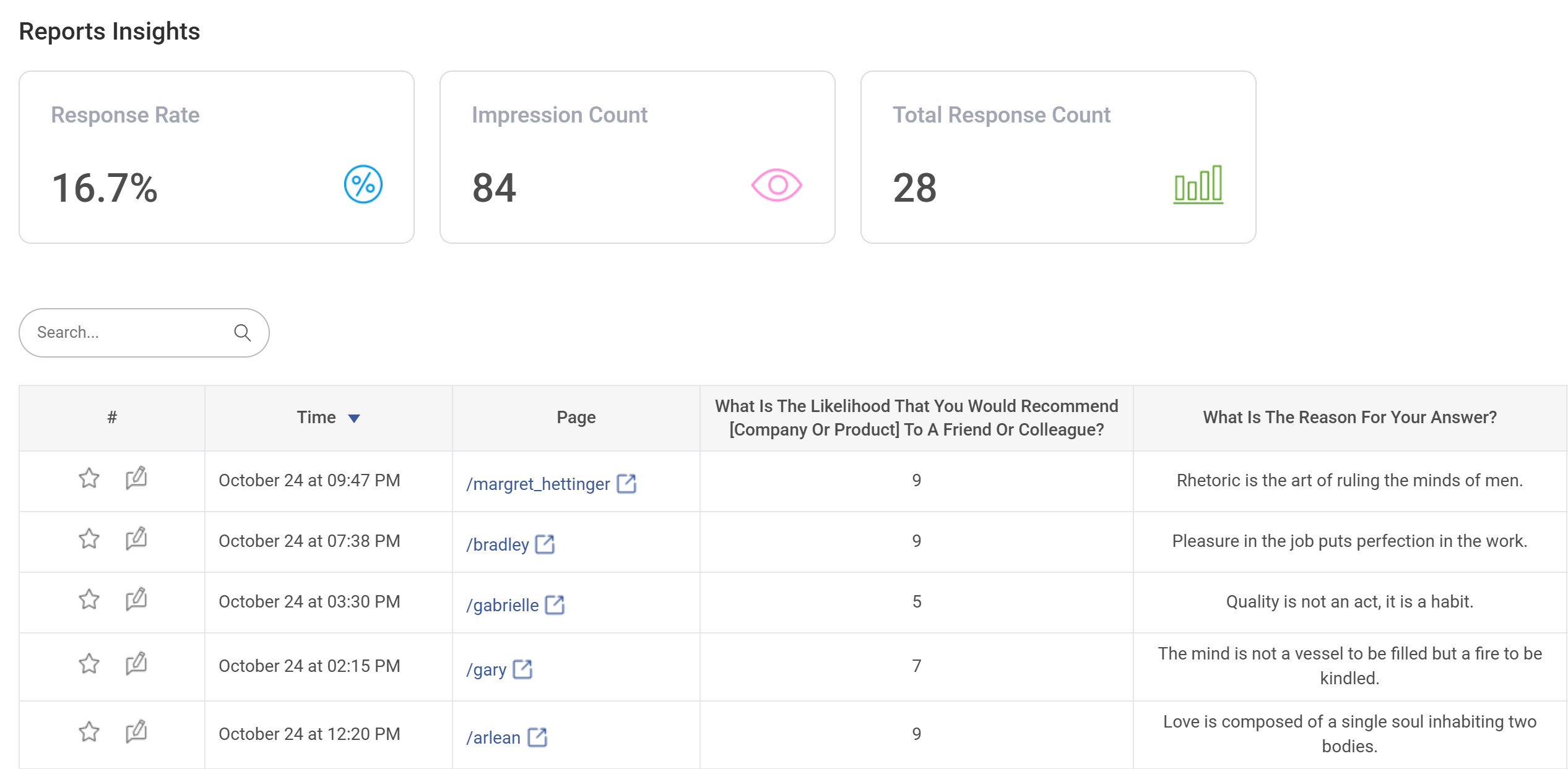
- Change only one element per test (e.g., headline, button copy, timing)
- Run A/B tests for wording, form layout, or CTA phrasing
Following these steps, you can harness the full potential of website feedback forms to drive UX optimization and enhance user satisfaction. Valuable insights and actionable opportunities lie within user feedback, making it a powerful tool for continuous improvement.
You should also be aware of these 26 common survey errors that can affect the quality and accuracy of your feedback.
Mistakes to Avoid When Creating Website Feedback Forms
Even well-intentioned feedback forms can fail if a few key details are overlooked. From mistimed triggers to vague questions, small missteps can lead to low response rates or noisy data that’s hard to act on.
Here are the most common mistakes teams make—and how to avoid them—so your feedback forms actually deliver insights you can use:
| Mistake | Why It Hurts | What to Do Instead |
|---|---|---|
| Showing forms too soon or too often | Triggers user frustration and form fatigue; increases bounce rate | Use behavior-based triggers (e.g., time-on-page, scroll %, exit-intent) and apply frequency capping |
| Asking everyone the same questions | Leads to irrelevant responses, user drop-off, and skewed data | Use conditional logic and audience segmentation to tailor questions to context and user behavior |
| Ignoring mobile optimization | Results in broken layouts, low engagement, and higher abandonment on mobile devices | Design forms with a mobile-first mindset: short, one-question-at-a-time, large tap targets |
| Failing to test before launch | Causes missed bugs, broken logic, or awkward phrasing to go live — undermining trust and insights | Preview forms on staging, test logic, spellcheck, and validate user journeys before publishing |
| Not closing the feedback loop | Makes users feel unheard; discourages future participation | Send thank-you messages, share “We listened” updates, and use auto-confirmation emails |
3 Real-World Success Stories With Website Feedback Forms
What better way to understand the power of website feedback forms than learning about the brands that did it? Here are a few examples of how companies leveraged Qualaroo’s website feedback forms:
1. Twilio – Capturing Behavioral Feedback Across Web Properties
After acquiring SendGrid, Twilio needed deeper insight into how visitors used their evolving multi-product platform. Traditional analytics and static user databases weren’t revealing enough about intent, device behavior, or user expectations.
Solution: Twilio used Qualaroo Nudges™ to launch targeted surveys across their web pages. These forms appeared contextually as users browsed, asking questions like:
- “Why are you visiting this page today?”
- “Are you accessing this via mobile or desktop?”
- “What were you hoping to accomplish?”
Impact: Twilio gathered real-time behavioral feedback from specific audience segments—without requiring developer resources or pre-existing user IDs. This helped fill critical data gaps, improve product positioning, and refine web content and navigation.
Purpose Solved: Understanding how different customer segments interact with multi-product experiences across desktop and mobile, and gathering input outside traditional analytics systems.
2. Udemy – Fixing Attribution Blind Spots & Improving Course Accessibility

Udemy found that many users arrived on their website after seeing an ad, hearing about the platform from a friend, or following an influencer. But in analytics, they appeared as “direct traffic.” This attribution disconnect made it hard to evaluate ad spend and campaign success.
Solution: Udemy deployed Qualaroo surveys to ask new website visitors how they discovered the platform. These forms were shown on high-traffic pages and segmented using Qualaroo’s Identity API and geolocation features.
Later, they used additional web surveys to ask students about the quality of machine-generated course captions—especially for non-native English speakers.
Impact: They uncovered hidden campaign attribution paths and made smarter ad budgeting decisions across regions. Feedback from students directly informed improvements to Udemy’s captioning system, resulting in more accessible course content and a better global learner experience.
Purpose Solved: Uncovering true marketing attribution for web traffic and validating product accessibility features using direct website feedback from real users.
3. Hootsuite – Using On-Site Feedback to Redesign a Key Landing Page

Hootsuite assumed that users who searched their brand name already understood what the product did. But bounce rates on their branded landing page told a different story.
Solution: Hootsuite placed a short Qualaroo survey on the landing page asking:
- “Did you get enough information to make a decision?”
The results were clear: more than 65% of users said they still needed clarity—particularly around the core product value, differences between plans, and real-world use cases.
Impact: Hootsuite revamped the landing page based on this feedback. They added clearer language, dashboard visuals, improved plan comparisons, and testimonials that highlighted day-to-day use. When they A/B tested the new version, it delivered a 16% lift in conversion at 98% statistical significance.
Purpose Solved: Identifying messaging gaps and reducing bounce rates by validating the clarity of landing page content through direct user feedback.
Takeaway
All three companies used on-site website feedback forms to uncover what analytics couldn’t:
- Why visitors bounce
- What’s unclear about the page or product
- What users expect but aren’t seeing
By triggering surveys at the right moment—whether on a homepage, course page, or mobile device—they turned passive sessions into active conversations and used those insights to drive measurable results.
Leverage the Power of Real-Time User Feedback
Website feedback forms help you understand your users, improve your website, and grow your revenue. But you need to design and implement relevant, engaging, and easy-to-use website feedback forms. You can leverage the strategies we discussed above to create engaging surveys and ask the right questions at the right time to the right users.
This is where Qualaroo can help you. It’s a powerful tool that helps you easily create website feedback forms and collect contextual, actionable insights. You can customize your forms, target your audience, and even integrate them with your favorite tools, like HubSpot, Slack, and many more.
Don’t miss this opportunity to get closer to your users and grow your business.
Frequently Asked Questions
What’s the best time to trigger a website feedback form?
It depends on the intent:
- Use exit-intent triggers to ask why users didn’t convert
- Use scroll-based triggers on blogs or long guides
Use time-based triggers after 30+ seconds on pricing or checkout pages
The key is to wait until the user is engaged—but before they bounce.
Should I use popups or embedded forms for collecting feedback?
Use popups (modals, slide-ins) for timely prompts like exit surveys or micro-feedback. Use embedded forms when you want persistent feedback access (e.g., floating “Give Feedback” button) or when the feedback is part of a flow like onboarding.
Can I collect anonymous feedback without hurting response quality?
Yes—especially for early-stage feedback or when addressing UX confusion. Just clarify in your message that no personal data is being collected. If anonymity is not ideal (e.g., support follow-ups), give users the option to enter their contact info.
How do I use feedback to actually improve my website?
Start by tagging and categorizing responses. Look for repeated themes—e.g., “can’t find pricing,” “login issues,” etc. Prioritize them by impact, test changes, and then use follow-up surveys or A/B tests to validate improvements.
What types of questions should I avoid in a feedback form?
Avoid:
- Double-barreled questions (“Was this page helpful and easy to understand?”)
- Leading questions (“Don’t you think our prices are fair?”)
- Generic prompts (“Any thoughts?”)
Instead, ask focused, open-ended questions like “What almost stopped you from signing up today?”
FREE. All Features. FOREVER!
Try our Forever FREE account with all premium features!


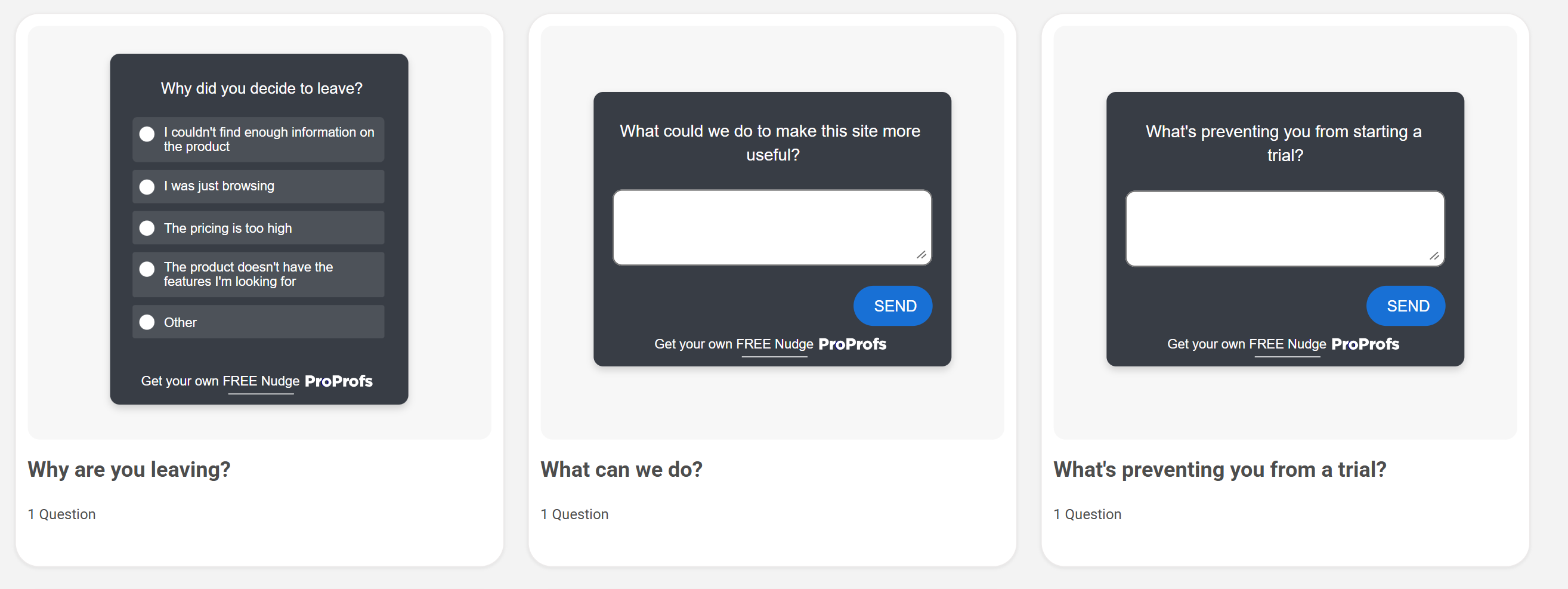
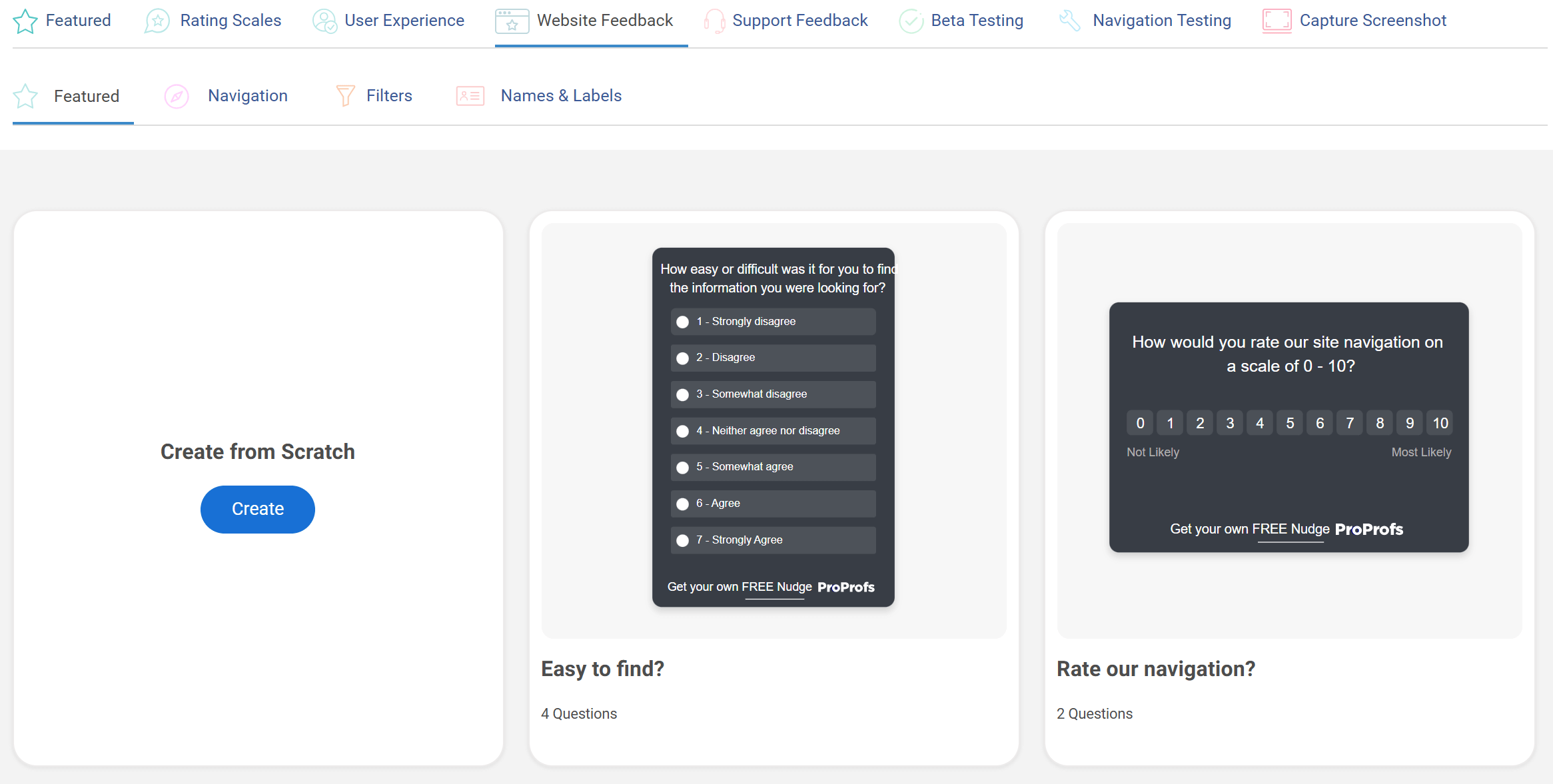
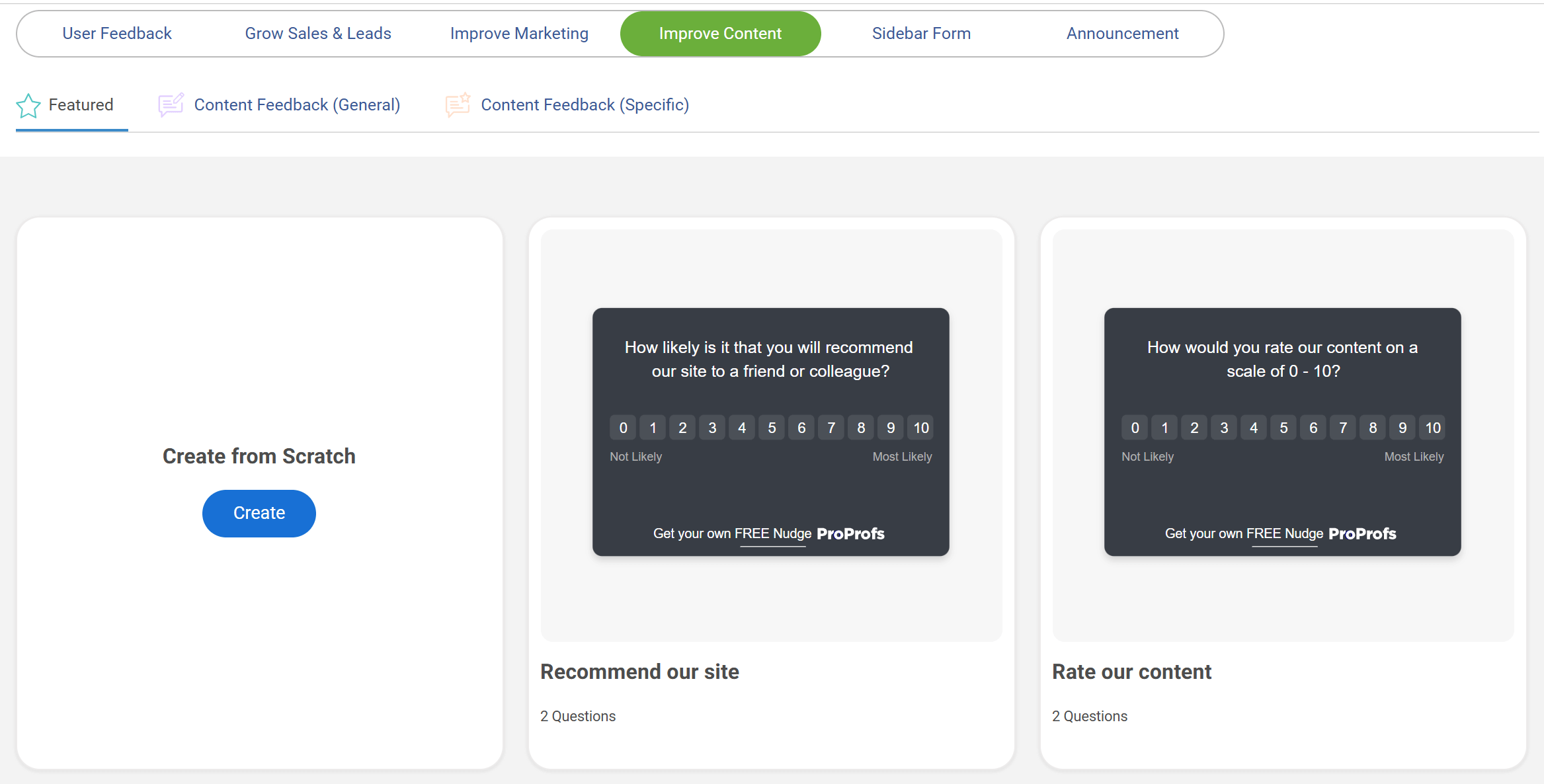
 We'd love your feedback!
We'd love your feedback! Thanks for your feedback!
Thanks for your feedback!






